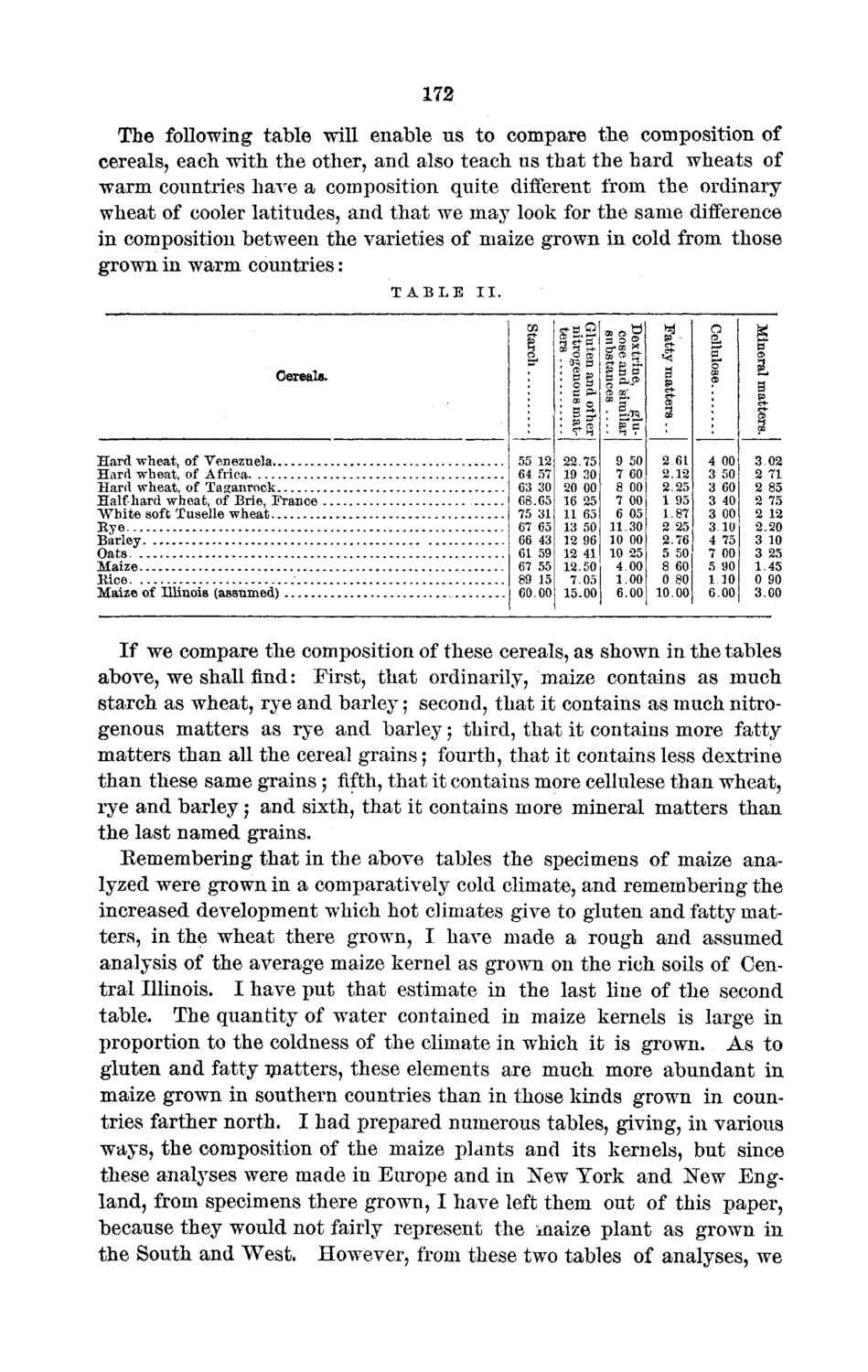| |
| |
Caption: Board of Trustees Minutes - 1872
This is a reduced-resolution page image for fast online browsing.

EXTRACTED TEXT FROM PAGE:
172 The following table will enable us to compare the composition of cereals, each with the other, and also teach us that the hard wheats of warm countries have a composition quite different from the ordinary wheat of cooler latitudes, and that we may look for the same difference in composition between the varieties of maize grown in cold from those grown in warm countries: TABLE II. A t 3 eg £ o a> ST* 2 00 ©!? ^ & • s o ® a'00 * ft a1 g 2- i o C D Cereala. : oeraW s . : » o : : p % £** CD 09" I 5S s e : B? 4 3 3 3 3 3 4 7 5 1 00 50 60 40 00 10 75 00 90 10 I 3 02 2 71 2 85 2 75 2 12 2.20 3 10 3 25 1.45 0 90 3.00 s Hard wheat, of Venezuela Hard wheat, of Africa Hard wheat, of Taganrock Half hard wheat, of Brie, France White soft Tuselle wheat Bye Barley. ., Oats Maize Rice Maize of Illinois (assumed) 55 12 64 57 63 30 68.65 75 31 67 65 66 43 61 59 67 55 89 15 60.00 22.75 9 50 261 19 30 7 60 2.12 20 00 8 00 2.25 16 25 7 00 1 95 11 65 6 05 1.87 13 50 11.30 2 25 12 96 10 00 2.76 12 41 10 25 5 50 12.50 4.00 8 60 705 1.00 0 80 15.00 6.00 10.00 600 If we compare the composition of these cereals, as shown in the tables above, we shall find: First, that ordinarily, maize contains as much starch as wheat, rye and barley; second, that it contains as much nitrogenous matters as rye and barley; third, that it contains more fatty matters than all the cereal grains; fourth, that it contains less dextrine than these same grains; fifth, that it contains more cellulese than wheat, rye and barley; and sixth, that it contains more mineral matters than the last named grains. Eemembering that in the above tables the specimens of maize analyzed were grown in a comparatively cold climate, and remembering the increased development which hot climates give to gluten and fatty matters, in the wheat there grown, I have made a rough and assumed analysis of the average maize kernel as grown on the rich soils of Central Illinois. I have put that estimate in the last line of the second table. The quantity of water contained in maize kernels is large in proportion to the coldness of the climate in which it is grown. As to gluten and fatty matters, these elements are much more abundant in maize grown in southern countries than in those kinds grown in countries farther north. I had prepared numerous tables, giving, in various ways, the composition of the maize plants and its kernels, but since these analyses were made in Europe and in New York and New England, from specimens there grown, I have left them out of this paper, because they would not fairly represent the maize plant as grown in the South and West. However, from these two tables of analyses, we
| |